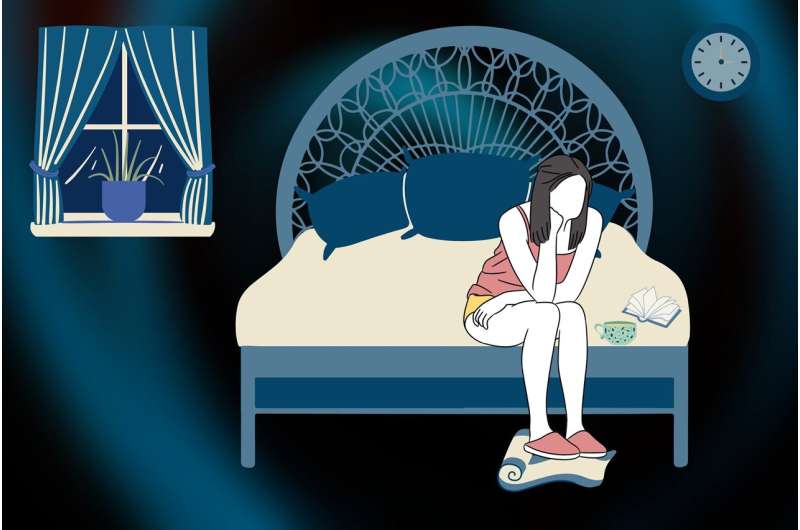This article has been reviewed according to Science X's editorial process and policies. Editors have highlighted the following attributes while ensuring the content's credibility:
fact-checked
trusted source
proofread
Racial disparities found in one of first studies of pharmacological treatment of insomnia

In one of the first studies to investigate racial disparities in the pharmacologic treatment of insomnia, researchers from Regenstrief Institute and Indiana University report that patients belonging to racial minority groups were significantly less likely to be prescribed medication following diagnosis of insomnia than white patients.
The study found that Black patients were much less likely to have been prescribed an FDA-approved insomnia medication at any time post diagnosis than white patients. Other non-white individuals were significantly less likely to be prescribed an FDA-approved medication two, three, and four years after insomnia diagnosis but not in year one.
"We looked at comorbidities—anxiety disorders and depression—and we looked at where individuals lived and other factors that might account for the disparity in prescriptions for medications following a diagnosis of insomnia," noted co-author and Regenstrief Research Scientist Malaz Boustani, M.D., MPH. "We found that race was the only variable that accounted for the differences in treatment."
The researchers reported that despite older patients and those with comorbidities being less likely to be prescribed insomnia medications regardless of race, white patients overall still had a shorter period between diagnosis and prescription than other races.
Insomnia is a common sleep disorder involving difficulty falling asleep, staying asleep or getting good-quality sleep. According to the U.S. Centers for Disease Control and Prevention, not getting enough sleep is linked with many chronic diseases and conditions including type 2 diabetes, heart disease, obesity and depression.
"We did this study to simply identify treatment trends," said Regenstrief Institute Research Scientist Noll Campbell, PharmD, M.S., a study co-author. "Are the trends we found caused by individual patient preferences, group-based preferences, or are they the result of different approaches to nonpharmacologic options for the treatment of insomnia? Future research will be needed to discern why these trends are occurring."
In this study, Indiana Network for Patient Care (INPC) data from about 10,000 individuals who were prescribed FDA-approved medications for insomnia was analyzed. The INPC is managed by the Indiana Health Information Exchange. Regenstrief created the INPC and provides access to data for research purposes.
"The Indiana Network for Patient Care proved once again to be an invaluable resource for understanding clinical practice. It was only through the INPC that we obtained the demographic, diagnostic, medication, and clinical notes data necessary for analyzing racial disparities in insomnia medication prescribing," said Regenstrief Institute Research Scientist Paul Dexter, M.D., a study co-author and clinician-informatician.
"The systematic analysis of electronic health records data can play an important role in helping us uncover disparities that can be acted upon towards more equitable care," said Regenstrief Institute Research Scientist Arthur Owora, Ph.D., MPH, the study senior author.
"This potential is highlighted by this study; however, given the inherent deficits of secondary data sources, a cautious interpretation is warranted, and further research is needed to better understand how and to what extent patient preferences and patient-clinician interactions may have contributed to the observed disparities in insomnia treatment."
The study population was 75 percent White, 69 percent female and 62 percent non-Hispanic. Average age at the time of insomnia diagnosis was 61.
"In addition to revealing racial disparity in prescription of medications for insomnia, the data suggests that providers may be undertreating insomnia," said study first author Emma Holler, MPH, a doctoral student and clinical epidemiologist with Indiana University School of Public Health—Bloomington.
The work is published in the journal Sleep Health.
More information: Emma Holler et al, Racial disparities in the pharmacological treatment of insomnia: A time-to-event analysis using real-world data, Sleep Health (2023). DOI: 10.1016/j.sleh.2023.02.002




















